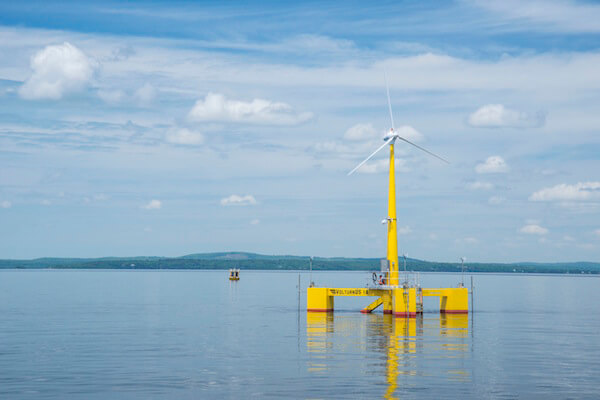Citing power price concerns, the Maine Public Utilities Commission (PUC) has decided to re-open the public comment period for New England Aqua Ventus – an offshore wind demonstration project planned off the coast of Monhegan Island – before a long-term power purchase agreement (PPA) is approved.
According to a local report from the Portland Press Herald, the PUC is concerned that in comparison to the current $0.07/kWh wholesale electric prices, the wind project would start off at $0.23/kWh and increase every year.
Maine Aqua Ventus I GP LLC, led by the University of Maine, is developing the two-turbine, 12 MW pilot project, which has qualified for U.S. Department of Energy (DOE) funding. The floating wind turbine hull design has already been tested at a 1:8 scale prototype, called VolturnUS, in Castine, Maine.
In January 2014, the PUC approved a term sheet for the project. The term sheet laid out the provisions of a potential long-term PPA between Maine Aqua Ventus and Central Maine Power. The regulators signed off on the $0.23/kWh price tag and said they would need to review and approve any final contract.
Now, in 2018, the commissioners say things are different: “Since the original term sheet was approved, the financial partners have changed, the location of the interconnection has changed from Bristol to Port Clyde, and the energy markets have significantly changed,” PUC spokespan Harry Lanphear told the Portland Press Herald. The report also suggests that the commissioners are “reflecting the priorities” of Maine Gov. Paul LePage, who “typically opposes renewable energy subsidies” because of increased electric rates.
Democratic State Rep. Seth Berry, House chair of the legislature’s Joint Standing Committee on Energy, Utilities and Technology, says in a statement, “This decision seems like another instance of the Public Utilities Commission going backwards and running away from clean, renewable energy projects that will create jobs in our state.
“Additionally, the PUC fails to understand that this is a demonstration project,” he continues. “For our state to realize its huge potential as a clean energy exporter, creating hundreds of good-paying jobs, we need research and development like this project to go forward.”




